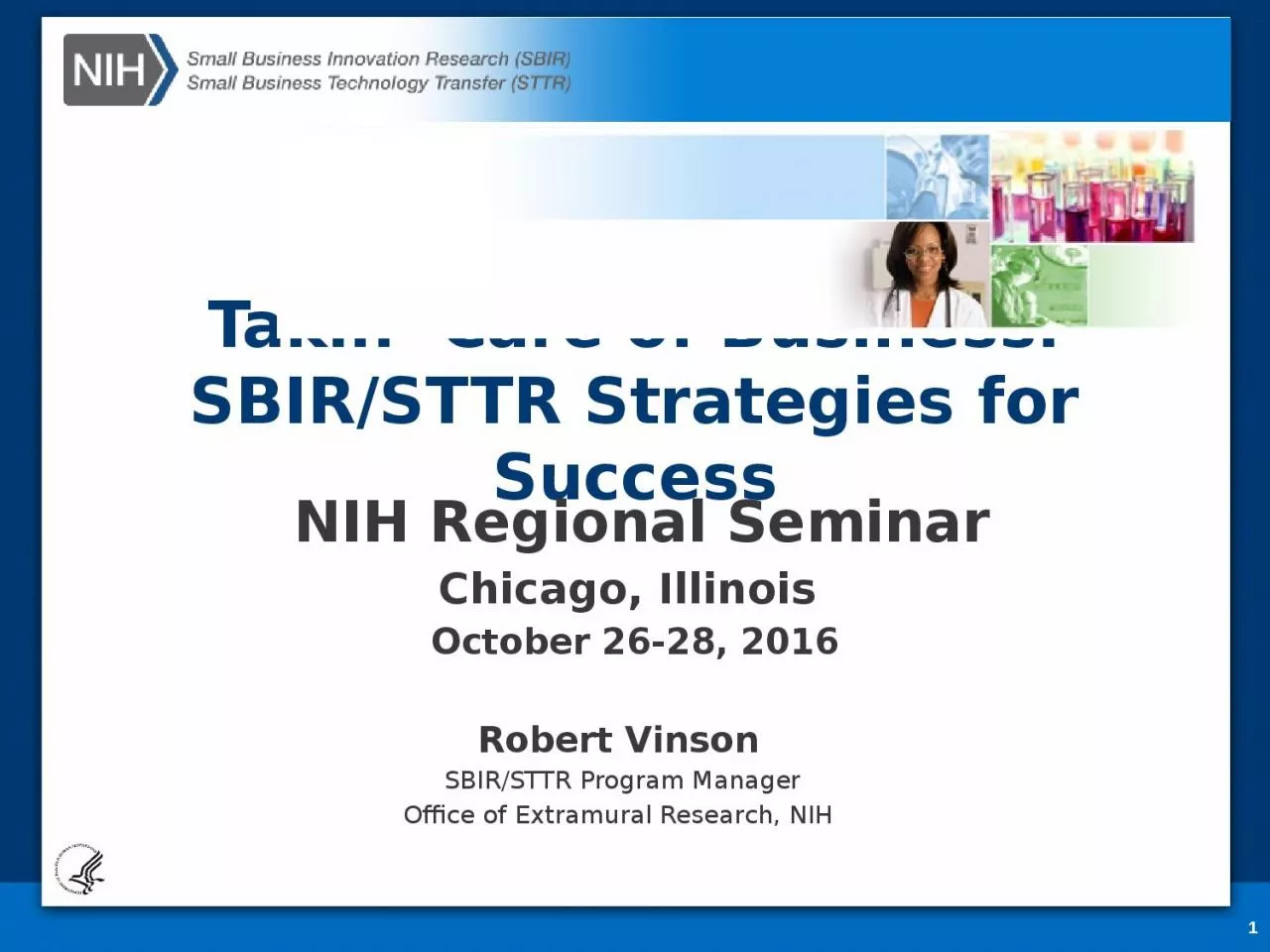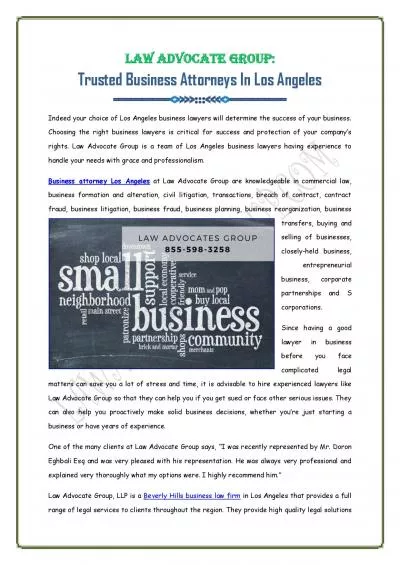PPT-Takin’ Care of Business:
Author : elyana | Published Date : 2024-03-13
SBIRSTTR Strategies for Success 1 NIH Regional Seminar Chicago Illinois October 2628 2016 Robert Vinson SBIRSTTR Program Manager Office of Extramural Research
Presentation Embed Code
Download Presentation
Download Presentation The PPT/PDF document "Takin’ Care of Business:" is the property of its rightful owner. Permission is granted to download and print the materials on this website for personal, non-commercial use only, and to display it on your personal computer provided you do not modify the materials and that you retain all copyright notices contained in the materials. By downloading content from our website, you accept the terms of this agreement.
Takin’ Care of Business:: Transcript
Download Rules Of Document
"Takin’ Care of Business:"The content belongs to its owner. You may download and print it for personal use, without modification, and keep all copyright notices. By downloading, you agree to these terms.
Related Documents














